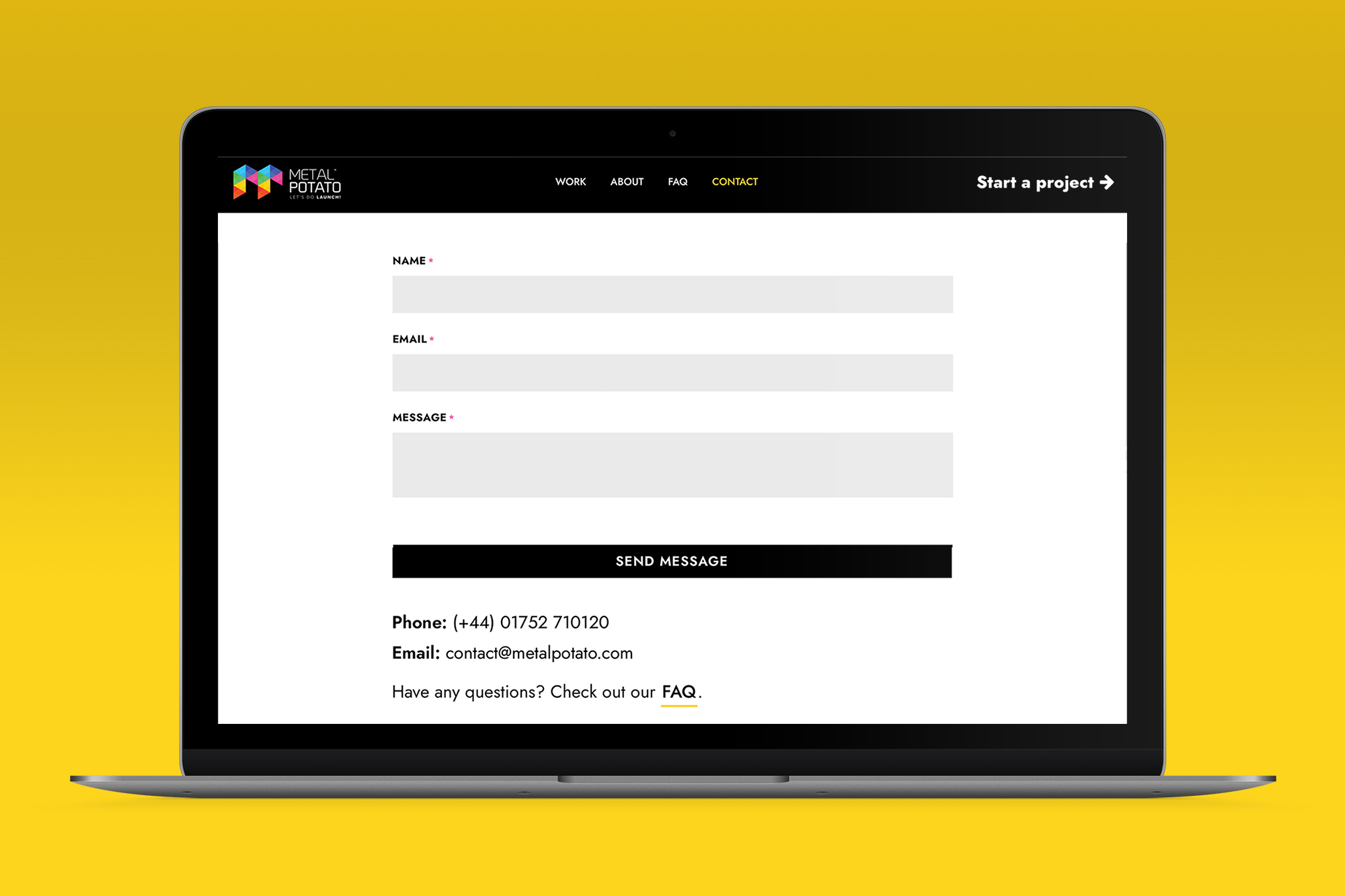As a website owner, it can be frustrating when you’ve put in the effort to create a great website, but it’s nowhere to be found in Google’s search results. You may be wondering, “Why isn’t my website showing up on Google?” The good news is that there are several common issues that can prevent your website from appearing in search results, and most of them are easy to fix.
Let’s explore nine possible reasons why your website isn’t showing up on Google and provide actionable solutions to help you improve your visibility.
1. Your website is too new
If your website is relatively new, it may not have been discovered by Google yet. Google needs time to crawl and index new websites and web pages. To check if Google knows about your website, you can perform a simple search using the “site:” operator followed by your website’s URL, like this: site:yourwebsite.com. If there are no results, it means that Google hasn’t found your website yet.
To ensure that Google discovers your website, you can create a sitemap and submit it to Google Search Console. A sitemap is a file that lists all the important pages on your website and helps search engines understand its structure. To create a sitemap, you can use various online tools or plugins depending on your website platform. Once you have a sitemap, you can submit it to Google Search Console by following these steps:
- Log in to Google Search Console.
- Navigate to the “Sitemaps” section.
- Enter the URL of your sitemap.
- Click “Submit”.
Submitting your sitemap to Search Console helps speed up the discovery process and ensures that Google knows about all the important pages on your website.
2. You’ve blocked search engines from indexing your pages
Sometimes, website owners unintentionally block search engines from indexing their pages by using “noindex” tags or directives. These tags instruct search engines not to include specific pages in their search results. To check if your website has any “noindex” tags, you can use Google Search Console or other SEO tools like Ahrefs Site Audit.
If you find any pages with “noindex” tags that shouldn’t have them, you can simply remove the tags to allow search engines to index those pages. It’s important to review your website settings, especially if you’re using a content management system like WordPress, to ensure that “noindex” tags are not being added automatically.
3. Google isn’t crawling your website
If your website is not showing up on Google, it could be because something is blocking Google from crawling your site. One common reason for this is a misconfigured “robots.txt” file. The “robots.txt” file tells search engines which pages or directories they should not crawl. If your “robots.txt” file is blocking URLs that you want to show up on Google, you’ll need to modify it.
To check if your “robots.txt” file is causing issues, you can again use Google Search Console. Navigate to the “Coverage” report and look for any errors related to “submitted URL blocks by robots.txt.” If you find any, you can edit your “robots.txt” file to remove the directives that are blocking the URLs you want to appear in search results. If you’re unsure about how to modify your “robots.txt” file, it’s recommended to seek help from an expert – please get in touch for assistance with this.
4. Your website has received a penalty
Google may penalise websites that violate its quality guidelines. These penalties can result in a decrease in search rankings or even complete removal from search results. If your website is not new and you’re not able to find it on Google, it’s possible that it has received a penalty.
To check if your website has been penalised, you can again use Google Search Console. Look for any penalty alerts or messages in the console. If you discover that your website has been penalised, you’ll need to identify the reasons for the penalty and take appropriate actions to fix them.
This may involve removing or disavowing low-quality or spammy backlinks, improving your website’s content and user experience, and complying with Google’s guidelines. Once you’ve made the necessary changes, you can submit a reconsideration request to Google to have your website reevaluated.
5. You lack high-quality backlinks
Backlinks, which are links from other websites to yours, play an important role in search engine rankings. Google considers backlinks as a signal of a website’s authority and relevance. If your website is not showing up on Google, it could be because you have fewer high-quality backlinks compared to your competitors.
To improve your backlink profile, you can take several steps:
- Reach out to relevant websites and request backlinks.
- Create valuable and shareable content that naturally attracts backlinks.
- Participate in industry forums and discussions, and include a link to your website in your contributions.
- Promote your content on social media to increase its visibility and chances of getting linked to.
Building high-quality backlinks takes time and effort, but it can significantly improve your website’s visibility in search results.
6. Your keywords are too competitive
If you’re targeting highly competitive keywords, it can be challenging to rank your website on Google, especially if you’re competing against larger and more established brands. Instead of focusing solely on broad and highly competitive keywords, consider targeting long-tail keywords, which are longer and more specific phrases that have lower search volumes but are less competitive.
Long-tail keywords often have a higher conversion rate because they indicate more specific search intent. By targeting these keywords, you can attract a more targeted audience and increase your chances of ranking higher in search results.
To find relevant long-tail keywords, you can use keyword research tools like Keyword Tool, KeywordsFX, or Google’s Keyword Planner. Look for keywords that are relevant to your business and have lower competition. By optimising your content around these long-tail keywords, you can improve your chances of showing up in Google’s search results.
7. Your website provides a poor user experience
User experience plays a crucial role in search engine rankings. If users have a negative experience on your website, such as slow loading times, difficult navigation, or poor design, they are more likely to leave quickly, increasing your website’s bounce rate.
To improve your website’s user experience, consider the following:
- Optimise your website’s loading speed by compressing images, minifying code, and using caching techniques.
- Ensure that your website is mobile-friendly and responsive.
- Provide high-quality, informative content that is easy to read and understand.
- Make your website’s navigation is intuitive and easy to use.
- Use visual elements, such as images, videos, and infographics, to enhance the user experience.
By focusing on improving your website’s user experience, you can not only increase your chances of ranking higher in search results but also provide a better overall experience for your visitors.
Conclusion
If your website isn’t showing up on Google, it’s essential to identify the reasons behind it and take appropriate actions to improve your visibility. Remember to regularly monitor your website’s performance, make necessary optimisations, and stay up to date with SEO best practices to maintain and improve your search visibility over time.
If you’re still struggling to get your website to show up on Google or need assistance with your SEO efforts, consider reaching out to a professional agency like ours. We have the expertise and experience to help you optimise your website, improve your search rankings, and drive more organic traffic to your business.
Contact us today to learn more about our services and how we can help you achieve your online goals.
Let's make a website!
Book a FREE video call to discuss your business, project strategy, and more!
"*" indicates required fields
More from Metal Potato
How to Write SEO Content That Converts
How to craft SEO content that climbs rankings! Strategies for keyword targeting, readability, and engaging writing techniques.
Contact Page Design: A Blueprint for Success
Learn how to optimise your contact page for better engagement and conversions with expert tips and inspiring examples.
How Google Remarketing Rescues Lost Customers
Revive lost leads with Google Remarketing! Target engaged visitors, boost ROI with personalised ads across Google platforms.
Unmasking SEO Scams and Safeguarding Your Website
Guard your business against SEO scams! Uncover deceitful tactics, red flags, and empower your online success with our tips.
How Often Should You Blog?
Optimise your blog's success with the perfect posting frequency! Learn to balance consistency, quality, and engagement for organic growth.
10 Proven Ways to Drive Traffic to Your Website
Boost your online presence with proven strategies! Master SEO, create engaging content, and more to drive traffic to your website.






